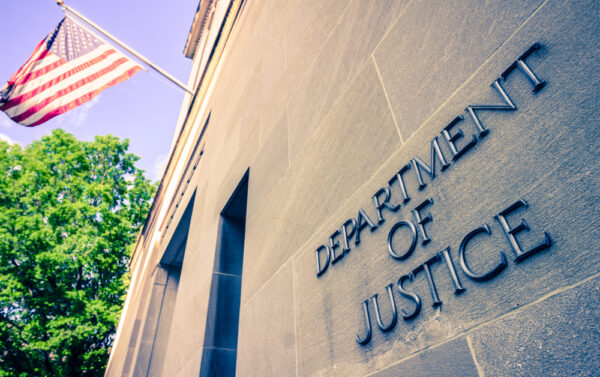Two Cheers for Contingent Fees is the title of a report by the American Enterprise Institute for Public Policy Research. I would have thought the report would have been Two Jeers for Contingent Fees… Tthe AEI sees real benefits to the contingency fee arrangement in lawsuits for both the plaintiffs and the defendants.
Two Cheers for Contingent Fees is the title of a report by the American Enterprise Institute for Public Policy Research. I would have thought the report would have been Two Jeers for Contingent Fees… Surprisingly, the AEI sees real benefits to the contingency fee arrangement in lawsuits for both the plaintiffs and the defendants.
Excerpts from the report:
The problems of excessive legal liability have been a longstanding concern of the American Enterprise Institute. In this monograph series, AEI aims to inform the growing political debates with original, intellectually rigorous research and scholarship by some of America’s leading students of law and economics. If America has been called “lawsuit hell,†contingent-fee lawyers have often been cast as the devils.
Contingent fees have been called unwarranted, and both the fees and the lawyers who accept them have been denounced as unethical and uncivilized.8 Several prominent observers have argued that contingent fees encourage excessive and frivolous litigation and, moreover, create conflicts of interest between client and attorney, especially with respect to settlement decisions. These observations and contentions have prompted tort reformers to demand, in addition to substantive legal reforms—such as caps on nonmonetary damages—caps or limitations on contingent fees. A number of states enacted contingent-fee limitations as early as the 1970s and throughout the 1980s.
Most recently, in November 2004, Florida voters approved a self-executing amendment to the state’s constitution which caps attorney fees in medical malpractice cases at 30 percent of the first $250,000 in damages awarded and 10 percent for any award amount above that.
We have considerable sympathy with the general case for tort reform and have submitted some of our reasons and evidence in earlier writings.11 For reasons explained in this monograph, however, we question the merits of contingent-fee limitations.
Based on the evidence presented here, we are persuaded that restrictions on contingent fees are, for the most part, unjustified. Moreover, they produce unintended negative consequences. Contingent-fee caps or limitations, which operate as a tax on lawyers’ compensation, will most likely tend to wash more low-value “junk suits†into the legal system.
Overwhelmingly, the anecdotal empirical ammunition against contingent fees comes from class actions or mass tort litigation, such as asbestos litigation. Exorbitant attorneys’ fee awards in consumer class actions that yield nothing but valueless coupons for the purported plaintiff class have drawn sharp criticism from legal scholars
and consumer activists. They have produced interventions by the Federal Trade Commission’s Bureau of Consumer Protection and, most recently, federal legislative reform.
Both the extensive literature and the targeted federal interventions, however, illustrate that class actions are a special problem, both as an empirical matter and in terms of the underlying economics. We put those problems aside for one excellent reason: The state contingentfee limitations here at issue do not apply to class actions or mass torts only. In point of fact, many are targeted at contingent fees in medical malpractice cases, where those forms of actions are exceptionally rare. It is in those traditional, individual suits over medical malpractice and personal injury that contingent-fee limitations, rather than contingent fees themselves, are likely to produce adverse consequences.
We are, as noted, critical of modern tort litigation—and yet cautiously supportive of the contingent-fee arrangements that seem to play such a big role in that industry. Is this not a contradictory position?
The short answer is no.
Some benefits of contingent fees are well agreed-upon. It is difficult for a plaintiff to evaluate how much effort a lawyer puts into a case. Timesheets are not easily verifiable, and even if they were, hours are not the same as effort. If the plaintiff loses his case, did he lose because his lawyer was ill-prepared? Or was it because the case lacked merit? If the plaintiff wins, would the award have been greater with more effort? A plaintiff who cannot answer these questions will look for some contractual device that promises to induce attorney effort without requiring that the plaintiff be well-informed.
There are several ways of accomplishing that objective. One device is a “conditional feeâ€â€”that is, a bonus tied to winning but not to the amount of the award. Thus, an arrangement providing for fees of $1,000 in the event of a loss and $2,000 in the event of a win is a conditional fee. In contrast, a contingent fee ties the lawyer’s payment to the outcome of the case on both the winning and award dimensions. (The contingent/conditional terminology is not standard, but we think the distinction is useful.) Under a contingent-fee contract, the lawyer receives a percentage of the award, thus providing an incentive to win and to win big. Unlike conditional fees, contingent fees motivate effort on all margins and are therefore more efficient.
Improved Access to the Legal System
A second advantage of contingent fees is improved access to the legal system. Consider what at first seems like a different problem, and imagine that you have a great idea for a new product. Bringing the idea to market will be expensive. You will need to hire engineers, rent office space, enter into distribution agreements, advertise, and so forth, and you are not wealthy.
CONTINGENT FEES
You might try to borrow money, but a bank is likely to say that your project is too risky, especially given the bank’s limited potential profits from the loan. “Come back when you have some customers,†says the bank’s lending officer. What you need is a venture capitalist who will supply upfront funds in return for a share of your firm. Unlike a bank, the venture capitalist’s potential profit is unlimited, which enables him to take significant risks. In addition to funds, the venture capitalist may also bring needed expertise.
A contingent-fee lawyer is, in effect, a venture capitalist of torts. The contingent-fee lawyer combines a claim with funding and expertise to produce a product to be presented to judge and jury. Without venture capital, good ideas would lie dormant. Without contingent fees, good cases would lie dormant.
Risk Spreading
A closely related point is that venture capital and the contingent fee allow entrepreneurs and plaintiffs to spread some of the risk of their projects to others who are better able to absorb it. In the language of general equilibrium theory, the plaintiff pays the contingent fee only in the state of nature in which he is rich, and not in the state of nature in which he is poor. Thus, the contingent fee is a form of insurance. Similarly, the contingent fee has aspects of a loan, since the lawyer makes his investment early but is not paid until later. These features of contingent fees are desirable to the extent that resource or liquidity constraints might otherwise preclude the litigation of meritorious cases.
Suppose you approach a plaintiff’s lawyer with a potential case, and he politely declines to represent you on a contingent-fee basis. What should you infer? You should infer that the attorney thinks that your case has little chance of winning. Since lawyers are better judges of prospective case outcomes than plaintiffs, this is a useful piece of information. If you cannot get a lawyer to take your case on contingent fee, suing is probably a waste of your time and money.
We should expect contingent-fee lawyers to tell their clients they are fools more often, or at least earlier, than lawyers paid by the hour.

The Legal Examiner and our Affiliate Network strive to be the place you look to for news, context, and more, wherever your life intersects with the law.













Comments for this article are closed.